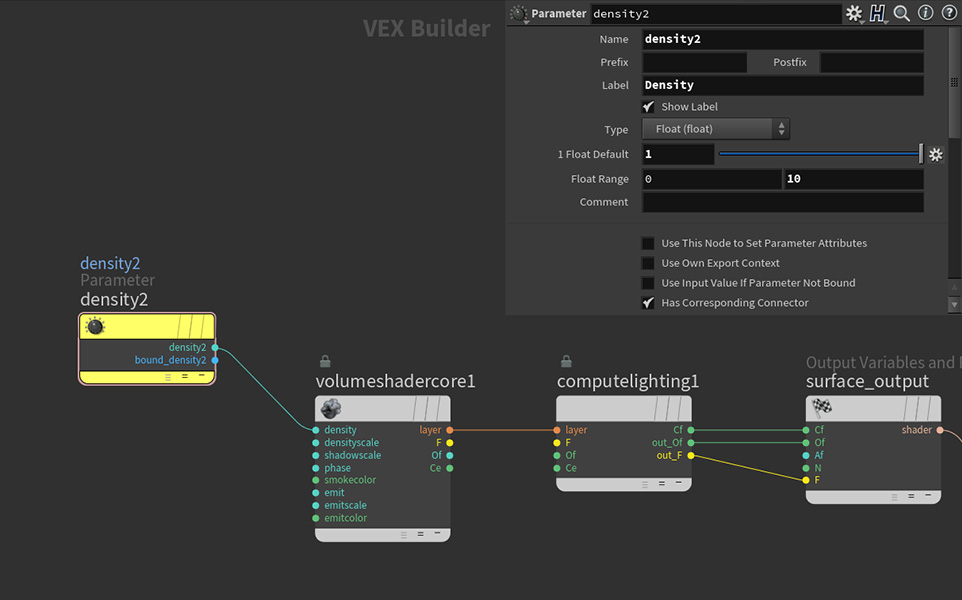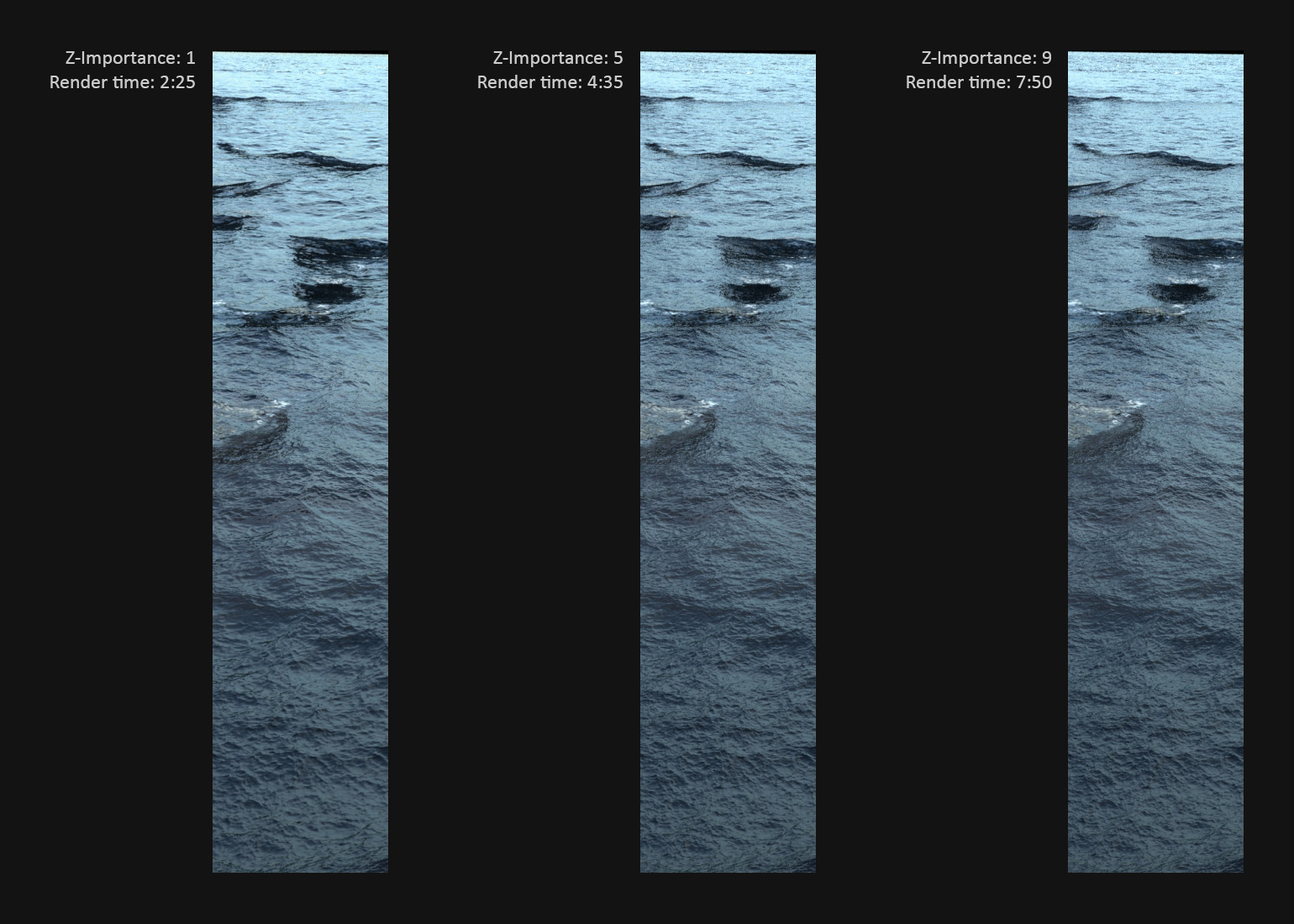This is a live demo showing the result of a custom cloud pipeline.
It shows that you can get fast and high quality results using a combination of standard tools.
Some statistics on one of the projects at the end of the video.
This is a live demo showing the result of a custom cloud pipeline.
It shows that you can get fast and high quality results using a combination of standard tools.
Some statistics on one of the projects at the end of the video.
Share:
When rendering volumetrics, the scattering phase parameter affects how the object will be shaded: with forward or back scattering.
If scattering phase > 0, then forward scattering occurs. This is typical for water fog.
If scattering phase < 0, then back scattering occurs. This is typical for smoke.
Share:
Try to always use SOP-level nodes in the paths to objects. Otherwise, the render flag will be used for rendering, which generally gives an unpredictable result.
This also applies to a geometric object in a geometry light.
Share:
If step voxels are visible when rendering the volume, then the necessary density field in the shader is missing.
This often happens when promoting the density attribute from volume shader core. Its name becomes density2 by default, and it must immediately be changed to density.

Share:
If you need to lighten a dense volume, then you can reduce the shadow density scale in the shader.
Share:
With high probability, the shop_materialpath attribute on points no longer works.
Share:
When using volume procedural (for example, for gridless advection), the resolution of the container becomes equal to 100 voxels along each axis. Therefore, volume quality must be increased:volume quality = (size along a larger dimension) / 100
This value is best set on the object.
If the rendering takes too long, you can create a multiplier for volume quality and reduce its value by a couple of times.
In volume procedural, you can use VDB, but you need to do vector split. The results of working with VDB and volume are almost the same.
Also in volume procedural, you can increase octree divisions. This eliminates the need to calculate empty areas. A value of 64 is sufficient; large values will take a long time to prepare before rendering.
Share:
The effect of the Z-Importance value on render time and on the image quality of the ocean with displacement:

Share:
When using VEX Volume Procedural, you need to export all the necessary data for the render, including the velocity field.
Share: